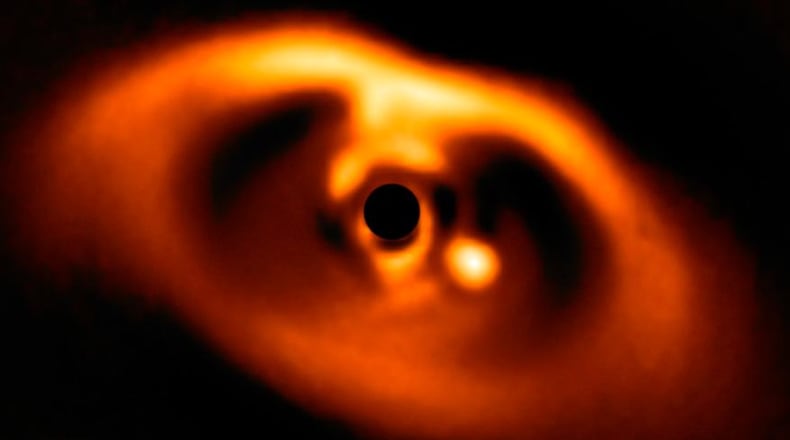It’s something that has rarely, if ever been seen, but scientists have announced that they’ve captured the image of a newborn planet.
The image released by European Southern Observatory looks like a wispy mass of gases, but to the right of the dark center, is a round shape that scientists say is the newborn planet, now called PDS 70b. It is named after the dwarf star PDS 70, CNN reported.
It was found using the European Southern Observatory's Very Large Telescope in Chile and a planet-hunting device called SPHERE, CNN reported.
The new planet is a giant gas planet and has a surface temperature of 1,932 degrees Fahrenheit and is larger than Jupiter. It also has a cloudy atmosphere, CNN reported.
While the image of the planet may look like it is close to its star, the new planet is as far as Uranus is from our sun, The Guardian reported.
It also orbits a star that when speaking of space is relatively young, only five to six million years old. The planet itself may be even younger, The Guardian reported.
The research was published in the journal Astronomy & Astrophysics this week.
About the Author
The Latest
Featured


